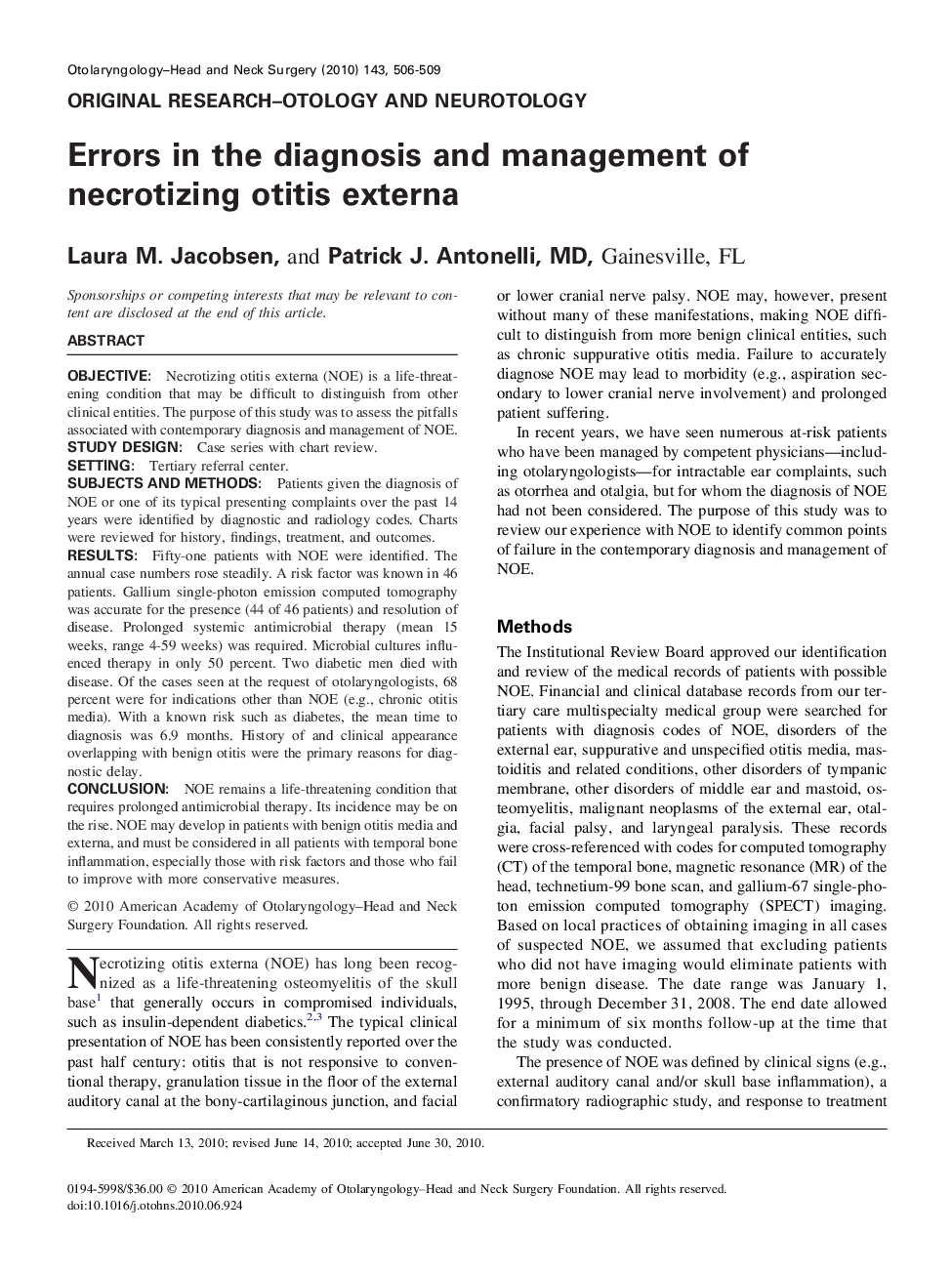| کد مقاله | کد نشریه | سال انتشار | مقاله انگلیسی | نسخه تمام متن |
|---|---|---|---|---|
| 4124793 | 1270673 | 2010 | 4 صفحه PDF | دانلود رایگان |

ObjectiveNecrotizing otitis externa (NOE) is a life-threatening condition that may be difficult to distinguish from other clinical entities. The purpose of this study was to assess the pitfalls associated with contemporary diagnosis and management of NOE.Study DesignCase series with chart review.SettingTertiary referral center.Subjects And MethodsPatients given the diagnosis of NOE or one of its typical presenting complaints over the past 14 years were identified by diagnostic and radiology codes. Charts were reviewed for history, findings, treatment, and outcomes.ResultsFifty-one patients with NOE were identified. The annual case numbers rose steadily. A risk factor was known in 46 patients. Gallium single-photon emission computed tomography was accurate for the presence (44 of 46 patients) and resolution of disease. Prolonged systemic antimicrobial therapy (mean 15 weeks, range 4-59 weeks) was required. Microbial cultures influenced therapy in only 50 percent. Two diabetic men died with disease. Of the cases seen at the request of otolaryngologists, 68 percent were for indications other than NOE (e.g., chronic otitis media). With a known risk such as diabetes, the mean time to diagnosis was 6.9 months. History of and clinical appearance overlapping with benign otitis were the primary reasons for diagnostic delay.ConclusionNOE remains a life-threatening condition that requires prolonged antimicrobial therapy. Its incidence may be on the rise. NOE may develop in patients with benign otitis media and externa, and must be considered in all patients with temporal bone inflammation, especially those with risk factors and those who fail to improve with more conservative measures.
Journal: Otolaryngology - Head and Neck Surgery - Volume 143, Issue 4, October 2010, Pages 506–509